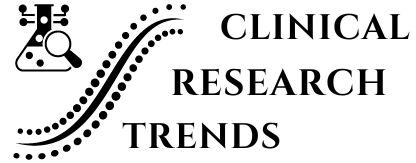The Use of Artificial Intelligence in Adverse Event Reporting
Adverse event reporting is a critical pillar in the framework of clinical research and pharmacovigilance. It serves as a mechanism for monitoring the safety and efficacy of medical products post-market approval. The primary purpose of adverse event reporting is to identify and assess risks associated with pharmaceuticals and medical devices, thus safeguarding public health. The conventional methods of adverse event reporting, however, are fraught with limitations such as underreporting, inconsistent data quality, and significant delays in data analysis. These challenges can impede timely decision-making and risk management, potentially jeopardizing patient safety.
In recent years, artificial intelligence (AI) has emerged as a transformative technology in various sectors, including healthcare. AI encompasses a range of technologies, including machine learning (ML), natural language processing (NLP), and data analytics, which can enhance the efficiency and accuracy of complex processes. In the context of adverse event reporting, AI has the potential to revolutionize the collection, analysis, and interpretation of data, leading to more proactive and responsive pharmacovigilance systems.
This blog explores the intersection of AI and adverse event reporting, examining how AI technologies are being leveraged to improve the detection, reporting, and management of adverse events. We will delve into the current applications, benefits, challenges, and future directions of AI in this critical area of healthcare.
Overview of Adverse Event Reporting
Adverse event reporting involves the systematic collection, assessment, and analysis of information related to adverse effects or other safety concerns associated with the use of medical products. An adverse event is defined as any undesirable experience that occurs following the administration of a medical product, regardless of whether the product is suspected to be the cause. The reporting of such events is crucial for understanding the risk profile of drugs and medical devices and for making informed decisions about their safety and efficacy.
The importance of adverse event reporting cannot be overstated. It provides a continuous feedback loop from real-world use back to regulatory authorities and manufacturers, helping to identify previously unrecognized risks and refine risk management strategies. This process is essential for ensuring that the benefits of medical products outweigh their risks, protecting public health.
Traditional adverse event reporting systems, however, face several challenges. One major issue is underreporting, which can occur for various reasons, including lack of awareness among healthcare professionals and patients, the perceived insignificance of certain events, and the burden of the reporting process. Additionally, the quality of the data collected can vary, with issues such as incomplete information, lack of standardization in terminology, and human errors in data entry. These challenges can result in delays in the detection of safety signals and hinder the timely implementation of risk mitigation measures.
Introduction to Artificial Intelligence (AI) in Healthcare
Artificial intelligence (AI) refers to the development of computer systems capable of performing tasks that typically require human intelligence. These tasks include learning, reasoning, problem-solving, perception, and language understanding. In healthcare, AI has been applied across a wide spectrum of applications, from diagnostic imaging and personalized medicine to predictive analytics and healthcare management.
The integration of AI into healthcare aims to enhance decision-making, streamline operations, and improve patient outcomes. For instance, AI algorithms can analyze medical images with high accuracy, assist in diagnosing diseases, and predict patient outcomes based on historical data. In the realm of pharmacovigilance, AI technologies offer promising solutions to enhance the efficiency and effectiveness of adverse event reporting systems.
AI technologies, such as machine learning and natural language processing, are particularly relevant to adverse event reporting. Machine learning involves the development of algorithms that can learn from data and make predictions or decisions without being explicitly programmed to perform specific tasks. NLP, a subfield of AI, focuses on enabling computers to understand, interpret, and generate human language. These technologies can be used to analyze large volumes of data, extract relevant information, and identify patterns or trends that may indicate potential safety concerns.
The potential benefits of AI in adverse event reporting include improved data accuracy, faster signal detection, and the ability to analyze large and diverse datasets. These advantages can lead to more timely and informed decision-making, ultimately enhancing patient safety and public health.
The Role of AI in Adverse Event Reporting
The application of AI in adverse event reporting encompasses several key areas, including automated data collection and integration, natural language processing for data analysis, and machine learning for signal detection. These technologies work together to streamline the reporting process, enhance the quality of the data collected, and improve the detection of potential safety signals.
Automated Data Collection and Integration
One of the most significant contributions of AI to adverse event reporting is the automation of data collection and integration. Traditional reporting systems often rely on manual data entry, which can be time-consuming and prone to errors. AI algorithms can automate the collection of data from various sources, such as electronic health records (EHRs), clinical trial databases, social media platforms, and spontaneous reporting systems. This automation not only reduces the burden on healthcare professionals and patients but also improves the completeness and accuracy of the data collected.
Moreover, AI can integrate data from both structured and unstructured sources. Structured data, such as coded terms and numerical values, is typically well-organized and easy to analyze. Unstructured data, such as free-text narratives, requires more complex processing to extract meaningful information. AI technologies, particularly NLP, can analyze unstructured data, identifying relevant details about adverse events that may not be captured through structured data alone.
Natural Language Processing (NLP) for Data Analysis
Natural language processing (NLP) is a powerful tool for analyzing unstructured data, which is abundant in adverse event reports. Unstructured data can include patient narratives, medical literature, social media posts, and other text-based sources. NLP techniques can process this data to identify mentions of adverse events, symptoms, or drug names, extracting valuable insights that may be missed by traditional data analysis methods.
For example, NLP can analyze patient comments on social media or forums to identify reports of adverse events that are not officially reported through formal channels. This "real-world evidence" can provide early warnings of potential safety issues, offering a broader view of a drug's safety profile. Additionally, NLP can be used to analyze scientific literature, extracting information about adverse events reported in clinical studies or case reports.
Machine Learning for Signal Detection
Machine learning (ML) models are instrumental in the detection of safety signals from large and complex datasets. A safety signal is a potential indication of an unexpected adverse event associated with a medical product, requiring further investigation. ML models can analyze data to identify patterns, trends, or correlations that may indicate the presence of such signals.
These models can be trained on historical data to learn the characteristics of known adverse events, enabling them to predict the likelihood of new events occurring. For example, an ML model may analyze data on adverse events reported in association with a specific drug and identify a previously unrecognized trend, such as an increase in reports of a particular side effect. This capability allows for the early detection of potential safety issues, enabling timely interventions.
Enhancements in Adverse Event Reporting Systems
The integration of AI into adverse event reporting systems has brought about several significant enhancements, including improved data accuracy and consistency, real-time monitoring and reporting, and enhanced predictive analytics. These improvements contribute to more efficient and effective pharmacovigilance.
Improved Data Accuracy and Consistency
One of the primary benefits of AI in adverse event reporting is the improvement in data accuracy and consistency. Traditional systems often suffer from issues such as human error, incomplete data, and inconsistent coding of adverse events. AI algorithms can standardize the data entry process, ensuring that information is consistently documented and categorized. This standardization is crucial for enabling accurate data analysis and comparison across different datasets.
For instance, AI can automate the coding of adverse events using standardized terminologies such as the Medical Dictionary for Regulatory Activities (MedDRA). This automation reduces the risk of inconsistent coding, which can lead to discrepancies in data analysis. Additionally, AI can perform quality checks on the data, identifying and flagging potential errors or inconsistencies for further review.
Real-Time Monitoring and Reporting
Real-time monitoring and reporting are critical for timely detection and response to potential safety issues. Traditional adverse event reporting systems often involve significant delays in data collection and analysis, which can hinder the rapid identification of emerging safety concerns. AI-powered systems can continuously monitor data sources, such as EHRs, social media, and spontaneous reporting systems, for signs of adverse events.
When a potential safety signal is detected, these systems can generate real-time alerts, notifying healthcare professionals, regulatory authorities, and pharmaceutical companies. This capability allows for quicker responses, such as conducting further investigations, updating product labels, or issuing safety communications. Real-time monitoring is particularly valuable in the context of new drug launches or in the early post-market phase, when there is a heightened need for vigilant safety surveillance.
Enhanced Predictive Analytics
AI technologies, particularly machine learning, offer advanced predictive analytics capabilities. By analyzing historical data and identifying patterns, AI models can predict future trends and outcomes related to adverse events. This predictive capability is valuable for risk assessment and management, helping stakeholders make informed decisions about the safety and efficacy of medical products.
For example, predictive models can estimate the likelihood of specific adverse events occurring in certain patient populations, based on factors such as age, gender, medical history, and concomitant medications. This information can be used to identify high-risk patients and implement targeted risk mitigation strategies. Additionally, predictive analytics can inform the design of clinical trials, helping to identify potential safety concerns that may need to be monitored closely.
Case Studies and Real-World Applications
The adoption of AI in adverse event reporting is not just theoretical; several pharmaceutical companies, regulatory agencies, and healthcare providers have successfully implemented AI technologies to enhance their pharmacovigilance systems. These real-world applications demonstrate the practical benefits of AI in improving drug safety monitoring and patient care.
Pharmaceutical Industry
Several pharmaceutical companies have integrated AI into their adverse event reporting processes. For instance, some companies use NLP to analyze patient feedback from various sources, including call centers, social media, and online forums. By processing this unstructured data, these companies can identify potential adverse events that may not be captured through traditional reporting channels. This comprehensive approach provides a more complete picture of the safety profile of their products.
In another example, pharmaceutical companies have deployed machine learning models to analyze clinical trial data. These models can identify patterns or trends that may indicate emerging safety concerns, allowing for proactive risk management. For instance, an ML model might detect an unexpected increase in reports of a particular side effect, prompting further investigation and potential changes to trial protocols or safety monitoring plans.
Regulatory Agencies
Regulatory agencies, such as the U.S. Food and Drug Administration (FDA) and the European Medicines Agency (EMA), have also embraced AI to enhance their pharmacovigilance efforts. These agencies use AI-powered systems to analyze large volumes of data from various sources, including spontaneous reporting systems, clinical trials, and electronic health records. By leveraging AI, regulatory agencies can more efficiently identify and assess safety signals, ensuring timely regulatory actions to protect public health.
In addition, regulatory agencies collaborate with pharmaceutical companies and academic institutions to advance the use of AI in pharmacovigilance. For example, the FDA's Sentinel Initiative uses big data and AI analytics to monitor the safety of FDA-regulated products. This initiative enables the FDA to proactively identify potential safety issues and assess the impact of regulatory actions.
Healthcare Providers and Researchers
AI tools are also being used by healthcare providers and researchers to enhance patient safety and improve clinical outcomes. In hospital settings, AI-powered systems can analyze patient data in real-time, identifying potential adverse events and alerting healthcare professionals to take appropriate actions. For example, an AI system might analyze a patient's electronic health record and identify a combination of medications that could increase the risk of a serious drug-drug interaction.
Researchers are also using AI to analyze data from clinical trials and observational studies. These analyses can identify potential safety concerns, guide the design of future studies, and inform the development of clinical guidelines. Additionally, AI can help researchers analyze patient-reported outcomes and other real-world evidence, providing valuable insights into the safety and effectiveness of medical products in diverse patient populations.
Challenges and Considerations
While the benefits of AI in adverse event reporting are substantial, several challenges and considerations must be addressed to ensure the successful implementation and ethical use of these technologies. These include data privacy and security concerns, regulatory and ethical considerations, and technical and implementation challenges.
Data Privacy and Security
The use of AI in adverse event reporting involves the processing of large amounts of sensitive patient data, raising concerns about data privacy and security. Protecting patient data is of paramount importance, as any breach of data confidentiality can have serious consequences, including loss of trust, legal liabilities, and harm to patients.
To address these concerns, it is essential to implement robust data security measures, such as encryption, secure data storage, and access controls. Additionally, organizations must comply with relevant data protection regulations, such as the General Data Protection Regulation (GDPR) in the European Union and the Health Insurance Portability and Accountability Act (HIPAA) in the United States. These regulations set standards for the collection, storage, and processing of personal data, ensuring that patient privacy is protected.
Regulatory and Ethical Considerations
Regulatory and ethical considerations play a critical role in the adoption of AI in healthcare. As AI technologies continue to evolve, regulatory agencies must establish clear guidelines and standards for their use in adverse event reporting and other healthcare applications. These guidelines should address issues such as data quality, algorithm transparency, and the validation of AI models.
Ethical considerations are also essential to ensure that AI technologies are used responsibly and fairly. For example, it is important to ensure that AI models do not inadvertently introduce biases into the analysis of adverse events. Biases can arise from the data used to train AI models, which may not be representative of diverse patient populations. Ensuring the fairness and transparency of AI algorithms is crucial to building trust among healthcare providers, patients, and the public.
Technical and Implementation Challenges
While AI technologies have made significant advancements, there are still technical limitations that must be addressed. For example, machine learning models may struggle to interpret complex or ambiguous data, and NLP algorithms may have difficulty understanding context in free-text narratives. Additionally, AI systems may require large amounts of high-quality data to function effectively, which can be a challenge in the context of adverse event reporting, where data may be sparse or inconsistent.
Implementing AI systems in healthcare settings also presents practical challenges. These include the need for significant investments in infrastructure, training, and resources. Healthcare organizations must ensure that their staff are adequately trained to use AI tools and understand the limitations and capabilities of these technologies. Additionally, integrating AI into existing systems and workflows can be complex and may require changes to established processes and practices.
Notable Labs and the Role of Artificial Intelligence in Adverse Event Reporting
Notable Labs is at the forefront of leveraging artificial intelligence (AI) to revolutionize adverse event reporting in clinical research and pharmacovigilance. Adverse event reporting is crucial for monitoring the safety and efficacy of pharmaceuticals and medical devices post-market approval. This process identifies and assesses risks associated with medical products, thus safeguarding public health. Traditional reporting methods often suffer from underreporting, inconsistent data quality, and delays, which can impede timely decision-making and risk management, potentially compromising patient safety.
AI, with its advanced technologies such as machine learning (ML) and natural language processing (NLP), offers transformative potential in this area. By automating data collection, integrating diverse data sources, and enhancing data analysis, AI helps streamline the reporting process. It enables more accurate and timely detection of potential safety signals, offering a proactive approach to pharmacovigilance. Notable Labs utilizes these AI technologies to analyze large datasets, extract relevant information, and identify patterns that might indicate adverse events, thereby improving the overall safety monitoring of medical products.
The adoption of AI in adverse event reporting at Notable Labs demonstrates the practical benefits of this technology. By improving data accuracy, facilitating real-time monitoring, and offering enhanced predictive analytics, Notable Labs helps ensure more informed decision-making in drug safety. As AI continues to evolve, Notable Labs remains committed to advancing pharmacovigilance, addressing challenges such as data privacy and ethical considerations, and promoting the responsible use of AI in healthcare. Through collaboration and innovation, Notable Labs aims to enhance patient safety and contribute to the overall improvement of healthcare outcomes.
Conclusion
The integration of artificial intelligence into adverse event reporting systems represents a significant advancement in the field of pharmacovigilance. AI technologies, such as machine learning and natural language processing, offer the potential to enhance the efficiency, accuracy, and timeliness of adverse event detection and analysis. These advancements can lead to improved patient safety, more informed regulatory decisions, and a deeper understanding of the risk profiles of medical products.
As we look to the future, the role of AI in adverse event reporting is expected to continue to grow. Emerging trends, such as the use of big data analytics, advanced machine learning models, and real-world evidence, will further enhance our ability to monitor and manage the safety of medical products. However, it is essential to address the challenges associated with AI, including data privacy, regulatory compliance, and technical limitations, to ensure the responsible and ethical use of these technologies.
To fully realize the potential of AI in adverse event reporting, it is crucial for stakeholders across the healthcare and pharmaceutical industries to collaborate and engage in ongoing research and innovation. Healthcare providers, researchers, regulatory agencies, and industry partners must work together to explore and implement AI solutions that enhance drug safety monitoring and improve patient outcomes.
We encourage stakeholders to stay informed about the latest developments in AI and pharmacovigilance and to participate in initiatives that promote the responsible use of AI in healthcare. By embracing AI technologies and fostering a culture of collaboration and transparency, we can continue to advance the field of pharmacovigilance and ensure the safety and well-being of patients worldwide.










